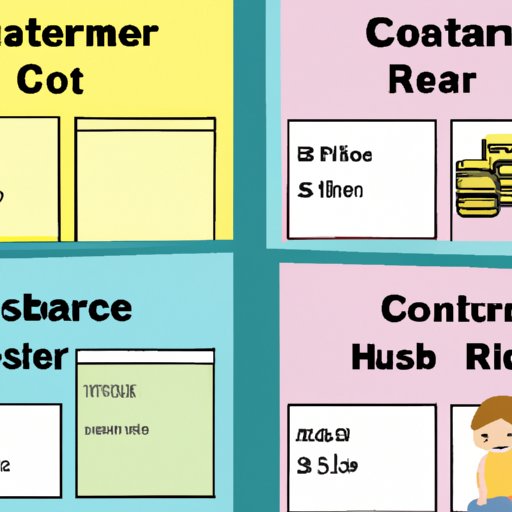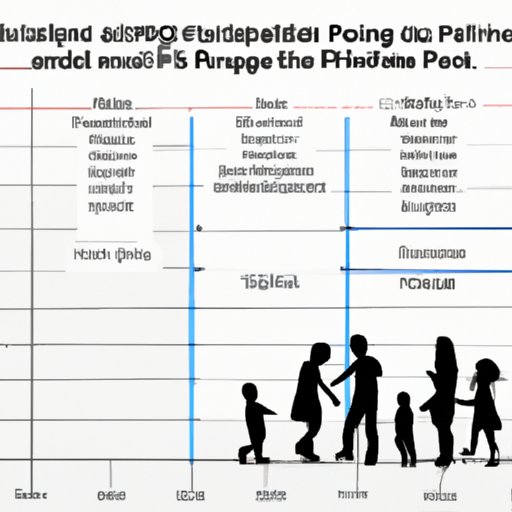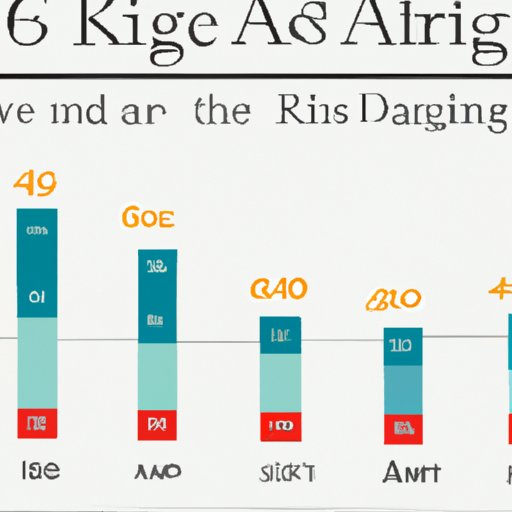Introduction
Having children is one of life’s greatest joys, but it’s no secret that parenting can be expensive. From housing and education costs to medical bills and everyday necessities, the cost of raising a child is no small expense. In this article, we’ll explore the cost of raising a kid from infancy to adulthood in different parts of the world, as well as how these costs have changed over time and how parental income affects the cost of raising children.

Comparing the Cost of Raising a Child in Different Areas
The cost of raising a child varies greatly depending on where you live. According to a recent report from the U.S. Department of Agriculture (USDA), the average cost of raising a child born in 2015 to the age of 18 was $233,610. However, this number can vary significantly based on location. For example, the USDA found that the cost of raising a child in urban areas of the Northeast was 25% higher than the national average, while the cost of raising a child in rural areas of the South was 14% lower than the national average.
Geographic differences are largely due to variations in the cost of housing. Rent or mortgage payments are typically the largest expense for families with children, accounting for about 30% of the total cost of raising a child. The cost of housing is higher in urban areas, so the overall cost of raising a child is also higher in these areas.
The cost of education is also higher in certain areas. Private school tuition can range from a few thousand dollars per year to tens of thousands of dollars per year depending on the region. In addition, college tuition costs are higher in some states than others, ranging from under $10,000 per year to over $50,000 per year. The cost of health care is another factor that can vary greatly depending on where you live.
Analyzing How Expenses for Kids Have Changed Over Time
The cost of raising a child has increased significantly over the past few decades. According to the USDA, the cost of raising a child born in 2015 was 20% higher than the cost of raising a child born in 1960, adjusting for inflation. The biggest increases were seen in the cost of housing, food, and transportation, which all increased by more than 50%.
Food costs have risen significantly due to an increase in demand for organic and specialty foods. Parents are increasingly willing to pay more for healthier options for their children. In addition, entertainment costs have risen due to the increasing popularity of video games, tablets, and other technology products.
Technology costs have also risen dramatically, with the average family spending nearly $400 per year on electronics for their children. This is partially due to the fact that many schools now require students to have access to computers or tablets.

Examining the Impact of Parental Income on Kid Expenses
Parental income plays a major role in determining the cost of raising a child. Low-income families often struggle to make ends meet, as they may not have access to the same resources as higher-income families. They may not be able to afford private school tuition, extracurricular activities, or even basic necessities like healthy food.
Middle-income families often face a unique set of challenges. They may not qualify for government assistance programs, but they may still struggle to cover the cost of child care and other essentials. High-income families, on the other hand, may be able to afford more luxuries for their children, such as private school tuition and extracurricular activities.

Breaking Down the Average Cost of Raising a Kid by Age Group
The cost of raising a child varies by age group. According to the USDA, the average cost of raising an infant is $12,680 per year, while the cost of raising a preschooler is $11,190 per year. The cost of raising an elementary school aged child is $10,480 per year, and the cost of raising a teen is $13,530 per year.
These costs include the cost of food, housing, clothing, transportation, healthcare, education, and other miscellaneous items. It’s important to note that these costs can vary greatly depending on a family’s lifestyle and geographic location.
Exploring the Financial Benefits of Having Multiple Children
Having multiple children can actually be financially beneficial for some families. This is because there are economies of scale when it comes to raising children. Many expenses, such as food and clothing, can be shared among siblings, resulting in significant savings. In addition, toys and other items can often be passed down from older siblings to younger siblings, eliminating the need to purchase new items.
Investigating How Government Programs Affect the Cost of Raising Kids
Government programs can help to offset the cost of raising children. The most common programs are tax credits, such as the Child Tax Credit and the Earned Income Tax Credit. These credits can reduce a family’s taxable income, resulting in significant savings. In addition, many states offer subsidized childcare programs, which can help low-income families cover the cost of daycare.
Other assistance programs include the Supplemental Nutrition Assistance Program (SNAP), which provides food assistance for qualifying families, and the Special Supplemental Nutrition Program for Women, Infants, and Children (WIC), which provides nutritious food and formula for pregnant women and young children.
Conclusion
Raising a child is a major financial undertaking, but the cost of raising a kid varies greatly depending on where you live, your income level, and the age of the child. Geographic differences can be attributed to differences in housing, education, and health care costs, while changes over time can be attributed to increases in food, entertainment, and technology costs. Parents can take advantage of government programs and economies of scale to help offset the cost of raising children.
In conclusion, the cost of raising a child is high, but it doesn’t have to be unmanageable. With careful planning and budgeting, parents can ensure that their children have the resources they need to thrive.
(Note: Is this article not meeting your expectations? Do you have knowledge or insights to share? Unlock new opportunities and expand your reach by joining our authors team. Click Registration to join us and share your expertise with our readers.)
